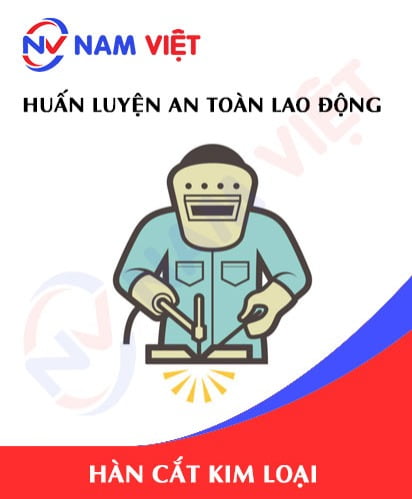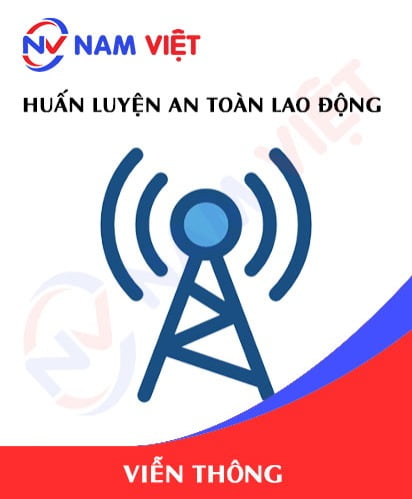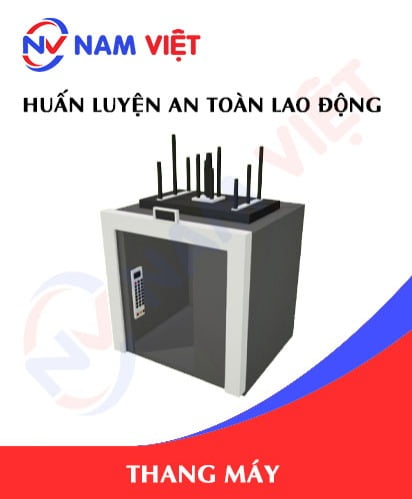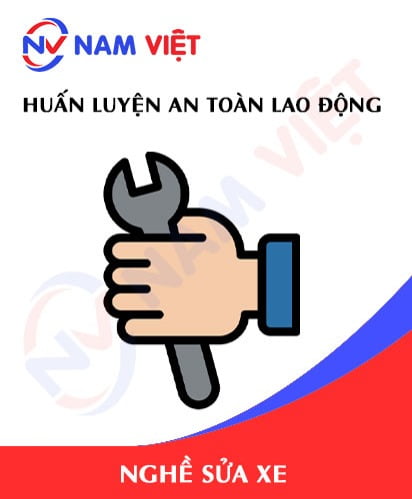Occupational safety training for operating forklifts
99,000 ₫
Note: The price above is calculated for one person, and it may vary depending on the number of participants in the training course and market fluctuations. For more accurate pricing support, please refer to the quotation table or contact our consulting staff directly.
Occupational safety is an important issue when operating forklifts and must be addressed promptly to ensure the health and safety of workers while enhancing the reputation of businesses. The Occupational Safety Training course is one of the effective solutions to raise awareness about preventing workplace accidents for workers when operating forklifts.
Table of Contents
Toggle1. Overview of Forklift Trucks
a. What is a forklift truck?
A forklift truck is a type of machinery or equipment used to lift, move, and stack heavy loads or goods in industrial, transportation, and warehouse environments. Forklifts are commonly used to improve work efficiency, increase productivity, and ensure safety when handling and arranging goods.
There are several types of forklifts, including:
- Engine-powered forklifts: These use combustion engines such as gasoline, diesel, or compressed gas to operate. They can lift heavy loads and are suitable for various applications.
- Electric forklifts: These are powered by batteries or electricity. They are suitable for indoor environments and operations requiring low noise.
- Adjustable fork forklifts: These have adjustable forks to accommodate the size and shape of specific loads.
- Manual forklifts: These are hand-operated and do not use engines. They are generally used for lighter loads and require manual lifting and moving.

b. Applications of forklifts in production
Forklifts play a critical role in production industries, optimizing production processes, increasing productivity, and ensuring safety when handling components, raw materials, and finished products. Key applications include:
- Moving and stacking goods: Forklifts are used to lift and move components, raw materials, and finished products from one location to another in the production process, optimizing workflow and reducing handling time.
- Lifting heavy loads: In industries such as metal, construction, and mechanical engineering, forklifts are used to lift and move heavy items like steel, machinery, and industrial equipment.
- Warehouse arrangement: Forklifts help efficiently organize and arrange goods in warehouses. They can move pallets and stack them to save space and facilitate storage management.
- Adjustable forks: Forklifts with adjustable forks accommodate different sizes and shapes of goods, enhancing flexibility in production processes.
- Quality control: Forklifts can also be used to lift and move finished products for quality inspections to ensure standards are met.
- Occupational safety: Using forklifts reduces the risk of injuries from manual lifting and moving of goods, especially heavy or irregular loads.

c. Industries that use forklifts
Forklifts are widely used in various production sectors, including:
- Automotive industry: Used to lift and move parts like engines, wheels, and components along production lines or onto transport vehicles.
- Food and beverage industry: Used to move and stack boxes, pallets, and raw materials such as sugar, packaging, and food products.
- Industrial manufacturing: Used to move machinery, industrial equipment, and heavy loads during production.
- Electronics manufacturing: Used to move and stack electronic components like circuits, parts, and terminal devices.
- Chemical industry: Used to move and store drums and containers of chemical compounds.
- Shoe manufacturing: Used to move and store boxes of shoes, raw materials, and finished products.
- Construction industry: Used to lift and transport construction materials such as bricks, cement, steel, and other building materials.
- Toy and jewelry manufacturing: Helps move and stack products like toys, jewelry, and other goods.
2. Overview of forklift operation safety training
a. What is occupational safety training?
- Occupational safety training for forklift operation consists of sessions that provide workers with awareness and practices to prevent workplace accidents. Workers who directly operate forklifts fall under Group 3.
- This training helps workers identify and avoid hazards, reducing the risk of workplace accidents.
REGISTER FOR OCCUPATIONAL SAFETY TRAINING
b. Training duration
Initial safety training:
- Total training time must be at least 24 hours, including testing.
- 8 hours of theory on policies, regulations, and occupational safety laws
- 8 hours of theory on basic occupational safety knowledge
- 4 hours of specialized training theory
- 2 hours of practical exercises in specialized training
- 2 hours of theoretical testing at the end of the course
Training centers can distribute sessions over multiple days depending on worker schedules. Typically, the course is delivered in 6 sessions over 3 days, provided the company can arrange continuous training time.
Periodic safety training:
- Before the safety card expires, workers wishing to renew must complete periodic occupational safety training, with a duration of at least 50% of the initial training time.
Explanation: The total periodic safety training duration is at least 12 hours, including testing. After completing the course and passing the test, workers will have their safety card renewed.
c. Training content
| No. | TRAINING CONTENT | TRAINING HOURS | |||
| Total | Including | ||||
| Theory | Practical | Test | |||
| I | Policies and occupational safety laws | 8 | 8 | 0 | 0 |
| 1 | Overview of legal documents regarding occupational safety and hygiene. | 6 | 6 | ||
| 2 | Standards and technical regulations for occupational safety and hygiene. | 1 | 1 | ||
| 3 | Specific regulations from government agencies on safety and hygiene for new constructions, expansions, or renovations of facilities, and management of equipment and hazardous substances. | 1 | 1 | ||
| II | Basic occupational safety knowledge | 8 | 8 | 0 | 0 |
| 1 | Basic knowledge of workplace hazards and harmful factors. | 4 | 4 | ||
| 2 | Methods to improve working conditions. | 1 | 1 | ||
| 3 | Safety culture in production and business. | 1 | 1 | ||
| 4 | Rights and responsibilities of employers and employees; occupational safety policies; roles of safety officers. | 1 | 1 | ||
| 5 | Occupational safety regulations, signage, safety equipment, personal protective equipment, first aid, and occupational disease prevention. | 1 | 1 | ||
| III | Specialized training content | 6 | 4 | 2 | 0 |
| Comprehensive knowledge of machinery, equipment, hazardous substances; risk analysis and management; safe work procedures for hazardous equipment and substances. | 6 | 4 | 2 | ||
| IV | End-of-course safety test | 2 | 2 | 0 | 0 |
| Total | 24 | 22 | 2 | ||
See more training content of all 6 groups
d. Occupational safety card
After completing the safety training and passing the test, workers will receive a safety card (commonly referred to as occupational safety certificate for Group 3).
Group 3 cards include information such as name, date of birth, job, work environment, training duration, official stamp, and signature confirming completion.
According to Clause 2 of Article 24 of Decree 44/2016/ND-CP, there are two cases:
- If the employer and employee have a labor contract, the employer must sign and stamp the safety card after the worker completes the training and passes the test.
- If the worker is freelance or temporary without a labor contract, the training unit must sign and stamp the safety card after completion and testing.

3. Hazards When Operating Forklifts
Operating forklifts can pose many hazards, and failing to follow safety rules can lead to serious accidents. Below are some common hazards when operating forklifts:
- Tip-over: The most serious hazard when operating a forklift is the risk of tipping over, which can happen when lifting or moving loads that are too heavy or unstable.
- Collision: Forklifts can collide with objects such as walls, pillars, or other forklifts, causing damage to the vehicle or injury to the operator and other staff.
- Fuel or battery hazards: Incorrect refueling or battery charging can lead to fire, explosion, or environmental contamination.
- False sense of safety: When operators feel overconfident, they may become careless and fail to follow safety rules, resulting in accidents.
- Ignoring load limits: Lifting or moving loads that are too heavy or unevenly distributed can damage the forklift and increase the risk of tipping over.
- Not following safe driving rules: Failing to follow safe driving rules, including driving too fast, ignoring signals, or not wearing helmets and protective gear, can cause accidents.
- Skipping pre-use inspection: Not inspecting the forklift before use may lead to using a vehicle with technical defects or unsafe conditions.
- Insufficient training: Operators must receive full training on how to use forklifts and follow safety rules.
- Unsuitable terrain: Using forklifts on inappropriate surfaces can result in loss of control and accidents.
- Unsecured loads: Moving loads that are not properly secured on the forks can cause imbalance and accidents.

4. Measures to Control Occupational Accidents When Operating Forklifts
To control occupational accidents when operating forklifts, several important measures should be implemented. Here are key measures:
- Training and education: Ensure all forklift operators are fully trained and understand safety rules. Training programs should include both theoretical and practical sessions.
- Pre-use inspection: Before each use, operators should check the forklift to ensure it is functioning properly and free from defects. Any issues should be reported and fixed before continuing use.
- Follow safety rules: Ensure operators and other staff comply with safety rules, including using signals, wearing helmets and protective gear, adhering to maximum load limits, and observing speed limits.
- Load control: Before lifting goods, operators must verify the load and ensure it does not exceed the forklift’s capacity. Follow guidelines on how to place loads on the forks.
- Signals: Use warning signals to alert others when the forklift is moving or lifting a load, such as horns and indicator lights.
- Monitoring and management: Supervise forklift operations to ensure compliance with safety rules. Management should promote a safety culture and regularly review safety performance.
- Periodic maintenance: Perform regular maintenance to ensure the forklift operates safely and reliably. Key components such as brakes and lifting systems should be regularly checked.
- Create safe work areas: Ensure a safe working environment, including level, non-slip floors and no obstacles.
- Operator condition: Ensure operators are not fatigued or physically weak while working, as lack of focus can lead to accidents.
- Weather conditions: In adverse weather such as rain, snow, or fog, increase safety by adjusting driving behavior and following special safety rules.
- Periodic inspection of forklifts helps detect safety issues like wear or mechanical failure early, reducing the risk of accidents.
5. Benefits of Occupational Safety Training
An Toan Nam Viet provides businesses with the following benefits after completing occupational safety training according to Decree 44/2016/ND-CP on labor safety and hygiene:
- Workers can recognize potential occupational hazards and take preventive measures to avoid accidents.
- Businesses can establish risk prevention measures in production, operation, and maintenance processes.
- Reduce costs associated with unsafe work conditions.
- Continuous production without interruptions increases labor productivity and product quality.
- Compliance with labor safety laws reduces legal risks.
- Enhances business credibility and professionalism, strengthening the brand.
Nam Viet training programs help individuals prevent external hazards that could result in injury or even death.
REGISTER FOR OCCUPATIONAL SAFETY TRAINING
6. Customer Feedback After Completing Training
An Toan Nam Viet has years of experience working with businesses across Vietnam. The company’s commitment to professional safety training is strengthened by positive feedback from clients. Below are testimonials from partners served by An Toan Nam Viet:
7. Occupational Safety Training Capacity of An Toan Nam Viet
An Toan Nam Viet is a reputable and high-quality occupational safety training center in Vietnam. Safety training sessions are conducted continuously at factories, production workshops, and construction sites across all 63 provinces in Vietnam.
REGISTER FOR OCCUPATIONAL SAFETY TRAINING
Occupational safety training license
- An Toan Nam Viet has been certified by the Department of Labor Safety under the Ministry of Labor – Invalids and Social Affairs to provide occupational safety and hygiene training. This strengthens our training capacity.

Training materials and lectures
- Before being used in safety training courses, training materials are reviewed to ensure accuracy and effectiveness.
- Instructors follow standardized teaching methods developed by An Toan Nam Viet experts to maximize learning efficiency.
Facilities
- Controlling classroom conditions enhances teaching efficiency and learning outcomes.
- Our training facilities provide spacious classrooms with adequate lighting, training equipment, and other resources.
8. Nationwide Reputable Occupational Safety Training Center
At An Toan Nam Viet, we prioritize professional commitment in occupational safety training. Our goal is to equip workers with knowledge to protect themselves while contributing to national development.
We carefully prepare every detail, from teaching tools and materials to lighting and sound, to ensure effective training.
Our instructors are experienced experts with practical research on hazards across industries and preventive measures.
Lectures are practical, clear, and engaging, ensuring effective knowledge transfer aligned with Decree 44/2016/ND-CP.
Our training center offers:
- Competitive training costs with guaranteed quality.
- Flexible training schedules accommodating company production.
- Fast certification procedures in compliance with the law.
- Experienced instructors with years of expertise.
- Classrooms controlled for optimal learning efficiency.
- Lessons tailored to occupational safety in businesses.
- Professional and attentive service ensuring accurate and timely support for clients.

9. Additional Occupational Safety Training Materials
- Safety materials for forklift operation
- Training materials for lifting equipment operation safety
- Complete occupational safety training materials
- Occupational safety training test sets
- Forklift operation safety quiz
- Forklift safety training slides
10. Occupational Safety Training Activities
- THIEN NAM ELEVATOR JOINT STOCK COMPANY
- DINH VANG CO., LTD BRANCH IN NGHE AN
- WINTON MANUFACTURING CO., LTD
- THANH SON MANUFACTURING CO., LTD
- VIET INTERNATIONAL CERAMICS JOINT STOCK COMPANY
- JAGUAR IMPORT-EXPORT SERVICE CO., LTD
- C.B.S VIETNAM ONE MEMBER CO., LTD
- TAN HUNG THINH CO., LTD
- TOI NGUYEN CONSTRUCTION & TRADING ONE MEMBER CO., LTD
- HOANG MINH HUY MANUFACTURING & TRADING CO., LTD
- CODUPHA CENTRAL PHARMACEUTICAL JOINT STOCK COMPANY CENTRAL BRANCH
- AN TAM CONSTRUCTION & TRADING CO., LTD (Binh Duong Project)
- DU THANH PAPER PACKAGING CO., LTD
- HOGETSU VIETNAM CO., LTD
- CICOR VIETNAM CO., LTD
- HUA CHANG VINA SCIENCE & TECHNOLOGY CO., LTD
1 review for Occupational safety training for operating forklifts
No comments yet















phanminhhang341
Very good safety training service